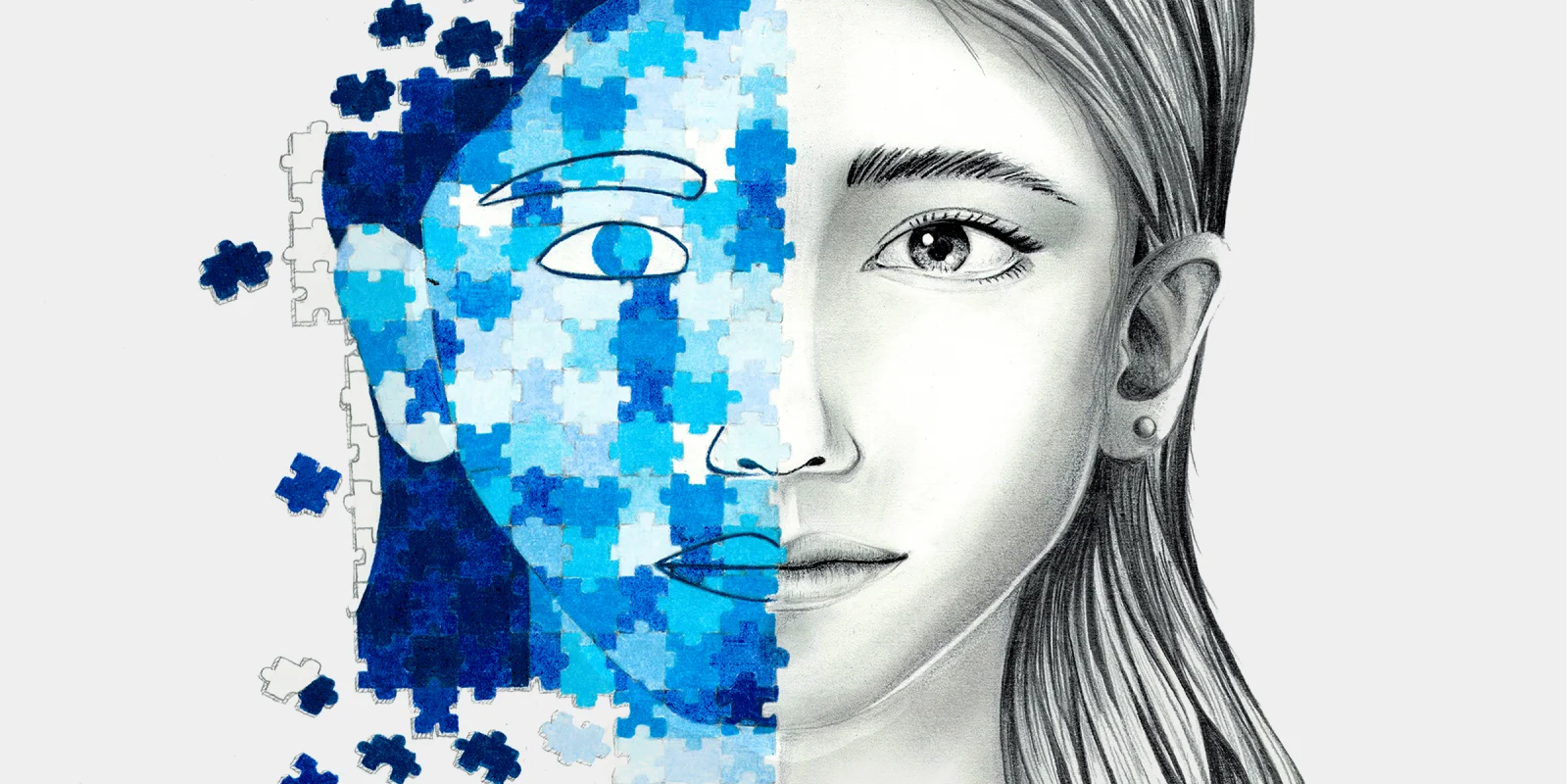This is part of the Medical Humanities series on Op-Med, which showcases creative work by Doximity members. Do you have a creative work related to your medical practice that you’d like to share? Send it to us here.
Click here to view the full drawing, “Pieces.”
What inspired you to create this drawing?
This piece was inspired by reflecting on my own experience in the clinic and the wards as a medical student.
How long have you been drawing portraits? What got you started?
I am a self-taught artist. I have loved to draw since I was a child, and during college I developed an interest in attempting semi-realistic portraits. As I have begun my career in medicine, I have used portraiture as a way to give a powerful voice to my journey in medicine.
Why did you choose drawing? What interests you about it?
‘Pieces’ is drawn with graphite and color pencil, which are mediums that I have used for prior works. The black and white of the graphite represents the neutrality and calm demeanor that the physician displays to the outside world, whereas the colored puzzle pieces reflect the emotional chaos inside and overwhelming feelings of sadness as she crumbles.
How does this submission relate to your medical practice?
As physicians, we have the incredible privilege of stepping into the world of our patients, often witnessing the most vulnerable depths of their humanity. They share with us their stories, their fears, their trials, and their triumphs.
But what happens when perhaps the story you heard, or something that you witnessed, has stuck with you even after you left the patient's room? In the fast pace of modern medicine, there is often little time to pause and have space to feel. Instead, we immediately see the next patient, going from hearing, "I want to kill myself," to "I just had a grandson!" within minutes; from pronouncing a patient dead, to fighting to keep the next patient alive. Even if we are still crumbling inside.
Our emotions are like a jigsaw puzzle, a patchwork of color representing the complexity of our feelings. There is no glue between these pieces. As we are overcome with emotion, they can easily fall apart. If we do not take the time to put these pieces back together, we become nothing more than a hollow shell. Yet, how can we be expected to take care of others if we do not take care of our own emotional wellbeing?
We are doctors; but more importantly, we are people. We must develop a culture in medicine that prioritizes the wellbeing of its providers as much as that of its patients, one that helps us put our pieces back together, instead of tearing us apart.
Shreya is an incoming preliminary intern at Kaiser Permanente Los Angeles and will be completing her dermatology residency at the University of Utah.







